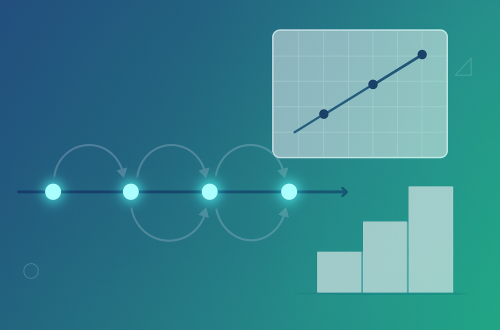For generations of students, formulas have been the towering obstacle of academic life. From physics and chemistry to economics and mathematics, formulas are often seen as rigid sequences of symbols that must be memorized and reproduced under pressure. The phrase “learn it by heart” becomes almost synonymous with academic success. Yet, this traditional approach — rote learning — is both inefficient and fragile.
The problem with rote memorization is not simply that it is tedious; it is that it fails to connect formulas to meaning. When we memorize a formula mechanically, we store information in short-term memory, where it quickly decays. But when we connect a formula to concepts, images, or stories, it becomes anchored in long-term understanding.
Modern cognitive science confirms this: memory is associative, not mechanical. We remember by linking new information to prior knowledge, emotions, or visual cues. The most effective learners are not those who repeat formulas hundreds of times, but those who can see the logic, the story, and the image behind the symbols.
This essay explores how students can replace rote learning with smarter, brain-friendly techniques. It introduces a set of formula memory hacks based on mnemonics, visualization, storytelling, and association. It also explains how these strategies align with neuroscience — turning formula memorization from a chore into a creative process.
Understanding the Science of Memory: Why Rote Learning Fails
Before we explore practical techniques, it’s important to understand how memory works and why traditional memorization often fails in formula-heavy subjects.
How Memory Is Structured
Memory operates through three interconnected processes: encoding, storage, and retrieval.
-
Encoding is how we first process information.
-
Storage is where we keep it (short-term or long-term memory).
-
Retrieval is the act of recalling it when needed.
Rote learning relies almost exclusively on repetition, which engages surface-level encoding but rarely builds meaningful connections. This is why students often forget formulas a week after the exam — they were never deeply encoded.
The hippocampus, the brain’s memory center, prefers patterns and meaning over isolated data. It builds stronger memory traces when information is connected to visual, emotional, or narrative cues. In other words, understanding enhances recall.
| Learning Method | Cognitive Process Involved | Retention Duration | Emotional Engagement | Example |
|---|---|---|---|---|
| Rote Memorization | Repetition without context | Short-term | Low | Repeating “E = mc²” ten times |
| Conceptual Learning | Understanding underlying logic | Long-term | Medium | Deriving E = mc² from basic physics |
| Associative Learning | Linking with images, stories, or sounds | Long-term | High | Remembering E = mc² by picturing energy compressed into light |
| Experiential Learning | Applying through real-world examples | Very long-term | Very high | Using E = mc² to explain nuclear energy or starlight |
The table shows that active engagement — mental or emotional — dramatically increases retention. Simply put, the brain remembers what it finds meaningful.
The “Meaning Gap” in Formula Learning
The root of students’ struggles with formulas is the meaning gap — the distance between symbols and understanding. A formula like
is simple to memorize, but without context (force equals mass times acceleration), it remains abstract. When a student visualizes a car accelerating or a ball being thrown, the symbols suddenly make sense. Meaning acts as the bridge between memory and understanding.
This insight underpins all formula memory hacks: to remember effectively, one must connect formulas to meaning, imagery, and experience.
From Memory to Mastery: Techniques That Make Formulas Stick
The best formula learning techniques are not tricks; they are structured ways to help the brain do what it already does naturally — associate, visualize, and tell stories. Below are several powerful methods for memorizing formulas without rote repetition.
1. Mnemonics: Turning Symbols into Stories
Mnemonics are one of the oldest and most effective memory tools. They work by converting abstract information into linguistic or visual hooks.
-
Acronyms and Phrases:
Convert formula terms into memorable phrases.
Example: For Ohm’s Law, remember “Voltage Is Irresistible” — linking each letter to the symbol.
-
Rhymes and Rhythm:
Musical or rhythmic repetition strengthens memory.
Example: To recall Newton’s laws, a short chant like “Still stays still, move keeps thrill — push or pull gives motion skill” connects movement to rhythm. -
Chunking:
Break complex formulas into smaller conceptual parts.
Example: The quadratic formulacan be memorized as “Negative bee, plus or minus the square of the bees, minus four tiny acorns, over two ants.”
This silly visualization embeds a mental image that is hard to forget.
Mnemonics work because they engage multiple areas of the brain — linguistic, visual, and auditory — creating dense memory connections.
2. Visualization: Seeing the Formula in Action
Humans are visual creatures. The brain processes images 60,000 times faster than text, and visual memory tends to last much longer. When you draw or imagine a formula, it moves from abstract to concrete.
For example, instead of memorizing the Pythagorean theorem
, picture a right triangle with colorful squares drawn on each side — two smaller ones combining to fill the larger one. The image of area addition reinforces the logic of the formula.
Visualization techniques include:
-
Drawing diagrams: Always sketch the situation described by the formula.
-
Color coding: Use specific colors for each variable to reinforce distinctions (e.g., red for energy, blue for distance).
-
Mind mapping: Create “formula trees” that show relationships among equations (e.g., connecting Newton’s laws to momentum and energy formulas).
By turning formulas into images, you move from mechanical memorization to conceptual visualization — a far more durable form of memory.
3. Storytelling: Giving Formulas a Narrative
Every formula tells a story — of cause and effect, of balance, of transformation. Turning formulas into stories humanizes them and makes them memorable.
For instance, the law of conservation of energy can be remembered as a story of transformation:
“Energy never dies — it just changes clothes. Kinetic turns into potential, heat into motion, but the total always remains.”
Similarly, in chemistry, the ideal gas law
can be imagined as a conversation:
“When gas gets heated (T), it pushes harder (P) or takes more space (V). It’s like people needing room when things get hot.”
Narrative thinking helps you personalize the formula, making it emotionally and logically memorable.
4. Association and Emotion: The Hidden Force in Memory
One of the strongest ways to make formulas “stick” is to associate them with emotions or sensory cues.
The brain prioritizes emotionally charged memories because they are linked to the amygdala, which boosts consolidation.
To use emotional association:
-
Connect formulas with real-life experiences:
-
For example, remember
(distance = velocity × time) by picturing your favorite road trip — speed, distance, and duration forming a vivid image.
-
-
Use humor or absurdity: Funny or exaggerated images tend to stick better than neutral ones.
-
Teach the formula to someone else: The act of explanation activates emotion and engagement, reinforcing understanding.
When you feel the formula, not just repeat it, your memory system treats it as significant — and keeps it.
Putting It All Together: The Integrated Formula Learning Strategy
The best results come not from one single hack, but from combining them into a unified system of formula understanding. This section outlines a practical approach that transforms memorization into mastery.
Step 1: Understand Before You Memorize
Start by breaking the formula into its conceptual components. Ask:
-
What does each variable represent?
-
Why are they related this way?
-
What real-world situation does this describe?
Once you understand the relationships, memorization becomes anchored in logic, not repetition.
Step 2: Create a Visual or Narrative Link
Translate the formula into a story, image, or metaphor. For instance,
(pressure equals force divided by area) can be remembered as “the same force feels stronger on a smaller space — like standing on one heel instead of both feet.”
This personal connection transforms abstract math into tangible experience.
Step 3: Use Active Recall and Spaced Repetition
Neuroscience shows that testing yourself strengthens memory far more than re-reading. Use flashcards, quiz apps, or teaching peers to recall formulas without looking. Combine this with spaced repetition, reviewing formulas at increasing intervals (1 day, 3 days, 1 week, etc.).
Step 4: Reinforce Through Application
Finally, apply the formula to real problems, experiments, or examples. Each time you use it, the neural connections become stronger and more accessible.
| Step | Description | Example Formula | Memory Aid |
|---|---|---|---|
| 1. Understand | Break down and interpret variables |
|
Think of a car gaining speed as you press the pedal |
| 2. Visualize | Create a mental or drawn image |
|
Picture colorful squares on triangle sides |
| 3. Narrate | Turn into a short story or metaphor |
|
“Gas needs room when it’s hot” |
| 4. Recall & Apply | Practice retrieval and use |
|
Explain it using stars, light, and matter |
By combining understanding, visualization, storytelling, and active recall, students not only remember formulas but internalize them — turning knowledge into intuition.
Conclusion: Learning Formulas as a Creative Act
Memorizing formulas doesn’t have to be mechanical or painful. When we shift from rote repetition to meaningful learning, formulas become alive — expressions of relationships, movements, and ideas rather than static codes.
The essence of “formula memory hacks” is not trickery but creativity. It’s about engaging the full human mind — logic, imagination, emotion, and experience. A student who can visualize the force in
, tell the story of energy in
, and connect velocity to a real car ride is no longer just memorizing; they are thinking scientifically and artistically at once.
In the age of AI and instant information, memorization may seem outdated. Yet memory remains the foundation of understanding — not because we must store facts, but because we must build mental models. And when formulas are remembered through images, stories, and meaning, they become part of our intuitive grasp of how the universe works.
So, the next time you face a page full of equations, don’t just recite them — see them, feel them, and narrate them. Your brain, designed for stories and symbols, will do the rest.

